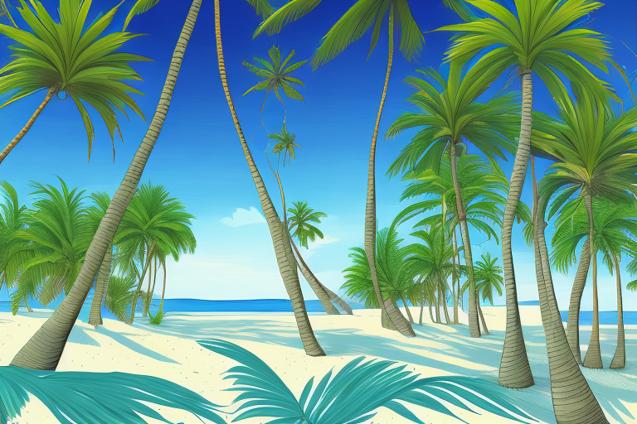
Discover the advantages and challenges of sailing in the Caribbean during high and low seasons, and make an informed decision for your next adventure.
Sailing the Caribbean: High Season vs. Low Season
The Caribbean is a dream destination for many sailors, offering a diverse range of islands, cultures, and experiences. With its warm climate, crystal-clear waters, and stunning landscapes, it’s no wonder that the Caribbean is a popular choice for those looking to escape the rat race and embark on a sailing adventure with their families.
However, as with any popular destination, the Caribbean has its high and low seasons, each with its own unique set of advantages and challenges. In this article, we’ll explore the differences between the high and low seasons in the Caribbean, and provide some practical advice to help you decide when to set sail for this tropical paradise.
High Season: December to April
The high season in the Caribbean typically runs from December to April, with the peak months being December, January, and February. During this time, the weather is generally warm and sunny, with temperatures ranging from 75°F to 85°F (24°C to 29°C). The trade winds are also at their most consistent during these months, providing ideal sailing conditions for those looking to explore the region.
Advantages of Sailing in the High Season
-
Consistent Weather and Sailing Conditions: The high season offers the most reliable weather and sailing conditions in the Caribbean. With consistent trade winds and minimal rainfall, you can expect smooth sailing and plenty of sunshine during your voyage.
-
Festivals and Events: The high season is also the time when many Caribbean islands host their most popular festivals and events. From the famous Carnival celebrations in Trinidad and Tobago to the St. Barts Bucket Regatta, there’s no shortage of exciting cultural experiences to enjoy during your sailing adventure.
-
Lively Atmosphere: With more tourists visiting the Caribbean during the high season, you can expect a lively atmosphere at popular anchorages, marinas, and beach bars. This can be a great opportunity to meet fellow sailors and make new friends as you explore the region.
Challenges of Sailing in the High Season
-
Crowds and Competition for Anchorages: The popularity of the Caribbean during the high season means that you’ll likely encounter more crowded anchorages and marinas. This can make it more challenging to find a quiet spot to drop anchor, and you may need to plan your itinerary more carefully to avoid the busiest locations.
-
Higher Prices: As with any popular destination, prices for marina fees, provisions, and other services tend to be higher during the high season. This can make your sailing adventure more expensive, so it’s important to budget accordingly.
-
Booking in Advance: Due to the increased demand for marina berths and other services during the high season, it’s a good idea to book well in advance to secure your preferred dates and locations.
Low Season: May to November
The low season in the Caribbean runs from May to November, with the quietest months being September and October. During this time, the weather can be more unpredictable, with the potential for tropical storms and hurricanes. However, there are still many advantages to sailing in the Caribbean during the low season, and with careful planning, you can enjoy a fantastic sailing adventure.
Advantages of Sailing in the Low Season
-
Fewer Crowds: One of the main benefits of sailing in the Caribbean during the low season is the reduced number of tourists. This means that you’ll have more choice when it comes to anchorages and marinas, and you’ll be able to enjoy a more peaceful and relaxed atmosphere as you explore the region.
-
Lower Prices: With fewer tourists visiting the Caribbean during the low season, prices for marina fees, provisions, and other services are generally lower. This can make your sailing adventure more affordable, allowing you to stretch your budget further.
-
Unique Experiences: While the high season is known for its festivals and events, the low season offers its own unique set of experiences. From turtle nesting season in the Grenadines to the annual Antigua Sailing Week, there’s still plenty to see and do during the quieter months.
Challenges of Sailing in the Low Season
-
Weather and Sailing Conditions: The main challenge of sailing in the Caribbean during the low season is the increased risk of tropical storms and hurricanes. While these events are relatively rare, it’s important to keep a close eye on the weather forecast and be prepared to adjust your plans if necessary.
-
Reduced Services: With fewer tourists visiting the Caribbean during the low season, some businesses may operate on reduced hours or close altogether. This can make it more challenging to find provisions and other services, so it’s a good idea to plan ahead and stock up on essentials before setting sail.
-
Off-Season Maintenance: Some marinas and boatyards may use the low season as an opportunity to carry out maintenance and repairs. This can mean that certain facilities may be temporarily unavailable, so it’s worth checking in advance to ensure that your preferred marina or boatyard is fully operational during your visit.
Making the Decision: High Season vs. Low Season
Ultimately, the decision of whether to sail the Caribbean during the high season or the low season will depend on your personal preferences and priorities. If you’re looking for consistent weather and sailing conditions, a lively atmosphere, and a packed calendar of events, then the high season may be the best choice for you.
On the other hand, if you prefer a more relaxed and peaceful sailing experience, with fewer crowds and lower prices, then the low season could be the perfect time to set sail.
Whichever season you choose, the Caribbean offers a wealth of unforgettable experiences and adventures for sailors and their families. With careful planning and preparation, you can enjoy the freedom and fulfillment that comes from exploring this beautiful region by boat.